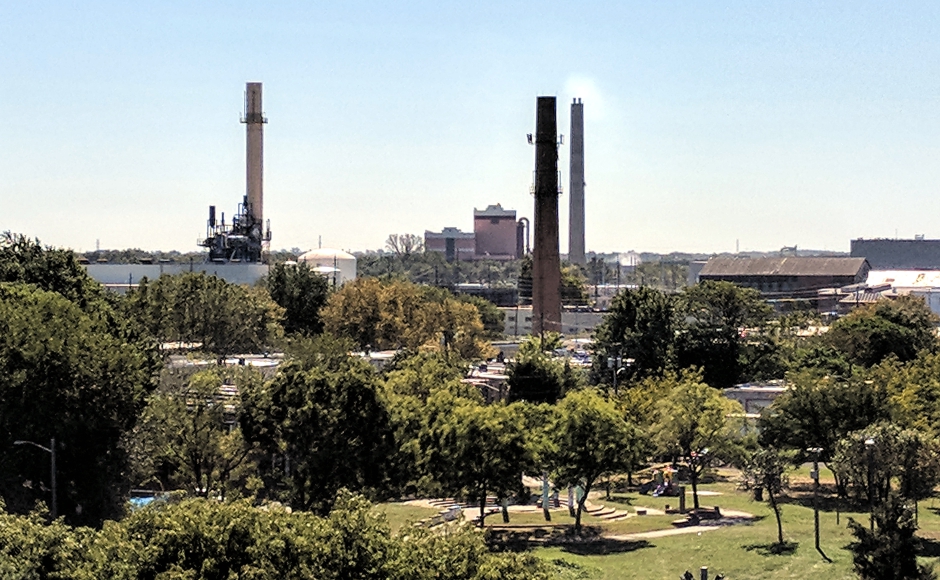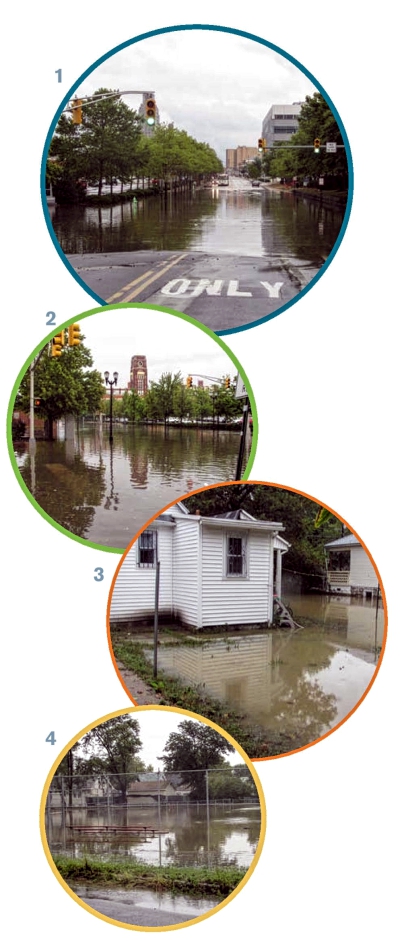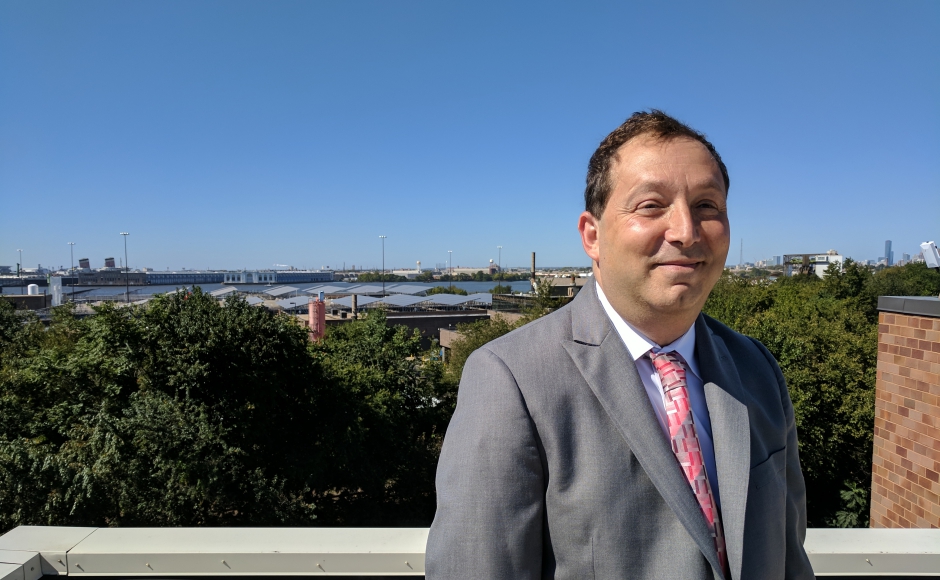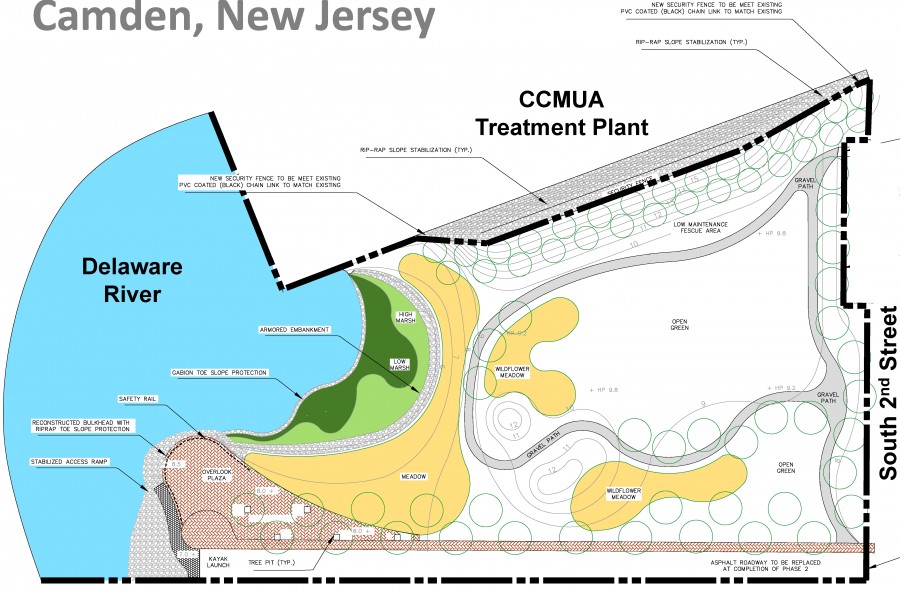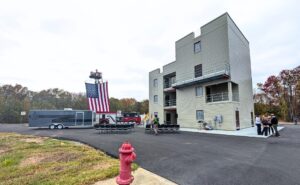Through overdue maintenance, expanded greenspace, and added processing capacity, the Camden County Municipal Utilities Authority believes it can corral storm flooding in the city within three years.
By Matt Skoufalos | December 11, 2017
Sewer overflow has been a generational problem for the residents of Camden.
Like many of its late-19th-century counterparts, including Philadelphia, Chicago, Boston, Los Angeles, and New York, the city was among the first to install a combined sewer-stormwater system, said Camden County Municipal Utilities Authority (CCMUA) Executive Director Andrew Kricun.
At that time, suburban homes still had outhouses, and neither the automobile nor the sprawling highways upon which it would travel had been conceived.
“It’s an example of early adoption being not always the best,” Kricun said.
More than 100 years ago, sidewalk and curbs were made out of materials that allowed for water infiltration.
A relative abundance of green space meant more opportunity for the ground to absorb stormwater.
But decades of development paved them over, and the local system became insufficient for processing the load it was asked to manage.
On an average rainy day in 2017, CCMUA processes about 50 million gallons of stormwater from the Camden County suburbs and some 10 million gallons from Camden City itself, Kricun said.
Heavy rainfall can increase the city’s share by a factor of 10; placed under duress, the undersized pipes back up, and combined sewage flows to the surface.
“If kids are walking through puddles to get to their bus stop, it’s probably combined sewage,” Kricun said. “That shouldn’t be anywhere.
“It’s hard to look out, as the wastewater planning system for the county, to see this environmental, health, and, you could argue, social-justice issue,” he said.
Camden is home to two of the 25-or-so combined sewer-and-stormwater systems in New Jersey. Separating the services out is prohibitively costly: a decade ago, estimates for the job topped $1 billion, Kricun said. Wealthier cities may replace their combined infrastructure piecemeal and over time, but a lack of revenues in Camden has challenged upkeep of the system, and a lack of maintenance has made the problem worse.
“Solids deposit at the bottom of the pipes, and over time, restrict the flow,” Kricun said. “You have to jet the pipes out every so often, but the city doesn’t have the resources to do that.”
Instead, the county government is securing some $80 million to clean out the city system, of which only about 15 percent is presently unblocked, he said. Half that amount could be covered by grant funding; the other half will be subsidized by a 30-year, low-interest-rate loan from the New Jersey Environmental Infrastructure Trust.
“This really is the cost of deferred repairs,” Kricun said.
After modeling the Camden sewer system, he believes the removal of settled deposits could account for as much as 90 percent of the flooding issues.
Jetting the pipes and cleaning outfalls that capture overflows should convey more waste flow to the CCMUA plant, which is being expanded and driving towards energy independence.
Some of the sediment will be “historic” leftovers from Camden’s industrial past, which means it must be captured from the outfalls after jetting to avoid spreading contamination, Kricun said.
He believes clearing bottlenecks in the pipeline will accommodate an additional 100 million gallons a day of stormwater, roughly equivalent to the rainiest days typically seen in the city. Repairing outfalls will allow them to function as safeguards again to accommodate any overflow.
“It’s like a relief valve, but they’re all clogged,” Kricun said. “By cleaning them out to make sure they work properly, and cleaning out the city system as well, we’re making sure [sewage] doesn’t go into the river or people’s basements.”
In 2011, Camden also moved to recapture some of its lost greenspace through the Camden SMART (Stormwater Management and Resource Training) Initiative. The project built about 60 rain gardens, funded by grants and low-interest state loans, in areas of the city most prone to flooding. The next stage of the plan is to restore some of the paved-over spaces to active and passive recreational use.
This year, Camden opened Cooper’s Poynt Park; on December 12, the city cuts the ribbon on Phoenix Park in the Waterfront South neighborhood, which turned 60 acres of impervious surface into a 5-million-gallon annual filtration system. The Cramer Hill Nature Preserve is planned to open 2018, as is the Gateway riverfront park, which was created from the DRPA-led cleanup of contaminated properties along Admiral Wilson Boulevard, and which is administered by the CCMUA.
[wpdevart_youtube]_zGRZ-omWXo[/wpdevart_youtube]
“The parks are very important from an aesthetic perspective, and help un-pave some of the city to put more water into the ground and not the sewer system,” Kricun said.
Those measures should resolve most of the concerns of the western half of Camden, but not in the Cramer Hill section, where Pennsauken stormwater runoff hits the city. Kricun said CCMUA is in the planning stages of a joint project with the Camden and Pennsauken municipal governments to resolve flooding issues that both towns share.
“You take care of both with one solution, and they’re both amenable to that,” he said. “There’s opportunity for greening there.”
Adding a new pumping station adjacent to commercial sites in the Camden waterfront district will provide a final, “belt-and-suspenders” solution to tidal storm surges, Kricun said. The entire project is on a three-year timeline at the longest, and more may yet need to be done to deal with flooding in the city when it wraps.
“The proof will be in the pudding,” he said. “This well-spent $80 million might solve much of the entire problem, and then you can cherry-pick what’s left. Based on the modeling, it’s being opportunistic.”
Camden County Freeholder Jeffrey Nash called the project “the most significant infrastructure improvement in the history of Camden,” describing it as the necessary groundwork to spur on economic development that topped $1 billion last year.
“Generally, what they’re doing is reducing the flooding and opening greenspace,” Nash said.
“If you have your sewage outfalls blocked, there’s nowhere for the sewage to go other than backed up.”
Moving forward, Nash said future development will be undertaken “as a mix of concrete and open space.”
“That is the current course of any type of development,” Nash said. “Even on the Camden waterfront you’re talking about preserving the fields and the new parks.”


